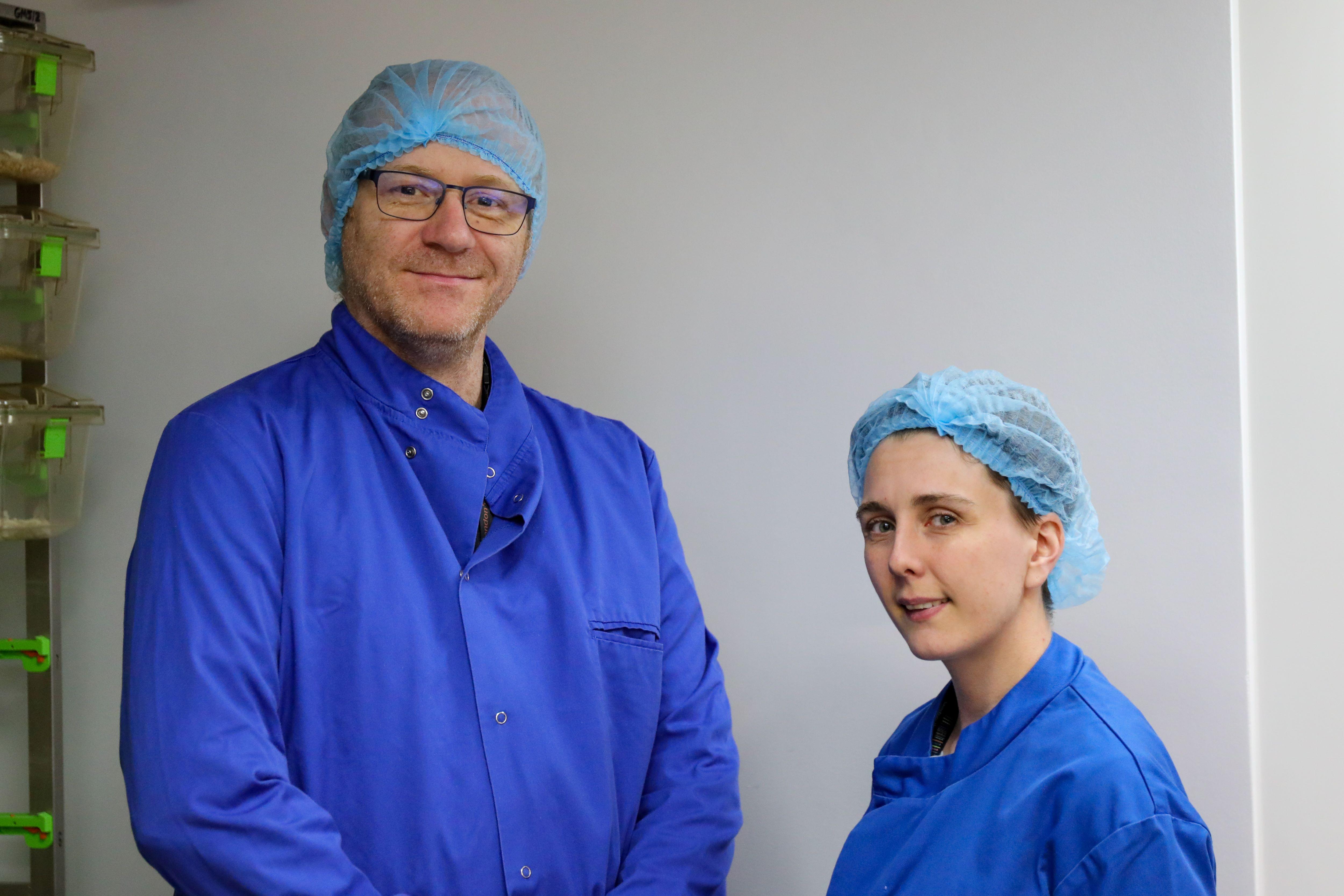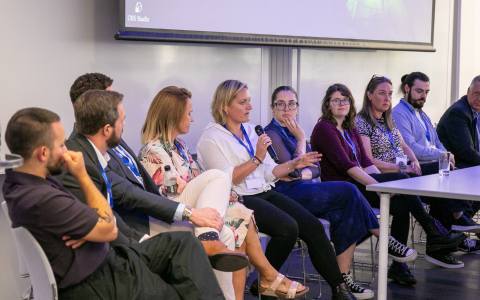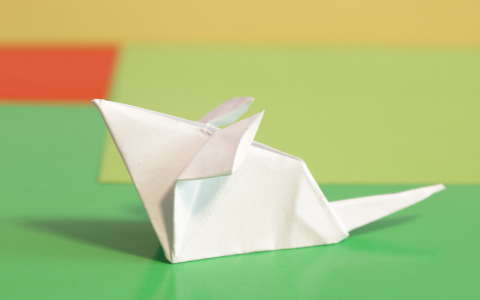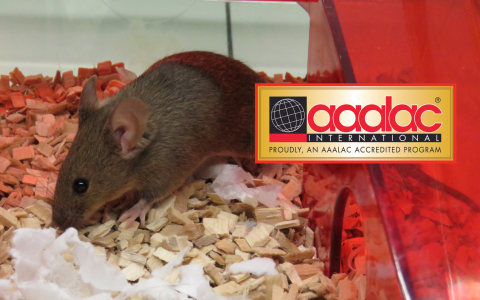
Could enrichment reduce mouse aggression?
By April Cashin-Garbutt
In the supportive atmosphere of the Sainsbury Wellcome Centre, animal technician Amy Veness embarked on a journey that led to the publication of their first scientific paper – a feat not commonly achieved by those in this role. This is the story of how Amy’s dedication to animal welfare and their collaborative spirit resulted in new research aimed at reducing aggression in CD-1 male mice through environmental enrichment.
Dedication to animal welfare
Amy first joined SWC in 2022. As a new member of the Neurobiological Research Facility (NRF), they were keen to contribute to the ongoing effort to improve animal welfare. At the time, one of the group leaders at SWC, Yoh Isogai, was working with a strain of mice called CD-1 to study the neural circuits underlying social behaviours.
A number of previous studies, including one by the National Centre for the Replacement, Refinement & Reduction of Animals in Research (NC3Rs), had documented high aggression levels in CD-1 male mice. Amy and the NRF team wanted to support Yoh’s research in an evidence-based way, and so they explored whether environmental enrichment could potentially provide a solution,
“I felt strongly that we shouldn’t take the standard enrichment as ‘gospel’. Instead, we should be testing and validating the enrichment that we’re giving to animals, because it could be that it’s more detrimental than beneficial. We should be looking at each individual strain as one group, rather than mice as a whole,” explained Amy.

Turning anecdotes into evidence
Intuitively, animal technicians and researchers tend to give lots of toys and enrichment to refine the lives of mice. While they had lots of anecdotes, Amy and the team wanted to find out whether specific enrichment, such as nesting materials, could help reduce aggression compared to other toys, which animals may become territorial over.
Their analysis revealed certain combinations of environmental enrichment, specifically Sizzle Nest combined with manipulatable enrichment like Nestlets and Cardboard Tunnels that promote shredding, were effective at reducing aggression in CD-1 male mice. The full results are published in Laboratory Animals.
“This short report is effectively a practical case study that shows the number and type of very specific enrichment. It offers an immediately implementable solution for others seeking to replicate or adapt the approach. By providing a detailed, evidence-based method, the paper highlights how the NRF directly supports SWC scientific projects through applied, data-driven insights,” explained Eleni Amaniti, Head of NRF.
Presenting and publishing
Amy presented the initial results in a poster at the Institute of Animal Technology (IAT) Congress and was subsequently invited to give talks at The Francis Crick Institute and The Laboratory Animal Science Association (LASA) conference. Following these presentations, the team decided to put together a paper to share their findings further.
“This paper shows that animal technicians’ work is very important both for supporting science and for animal welfare. Animal technicians often talk about anecdotes, but their insights are very important and have the power to produce scientific publications,” commented Christophe Galichet, Research Operations Manager (NRF) and co-first author on the paper.
Impact and future directions
The paper has important implications for animal welfare and husbandry practices. However, like many studies, it also raises further questions. It is not yet clear how the reduction in aggression in CD-1 male mice occurs, although one theory is that the nesting materials may help redirect aggression.
Looking ahead, Amy, Christophe and the wider NRF team hope to explore whether these findings apply universally across other strains of mice. They are currently working on multiple projects to improve the welfare for all mice and rats at SWC.
Find out more
- Read the paper in Laboratory Animals, ‘A customised combination of environmental enrichment reduces aggression in CD-1 male mice’
- Find more about the Isogai Lab (2016-2023)


